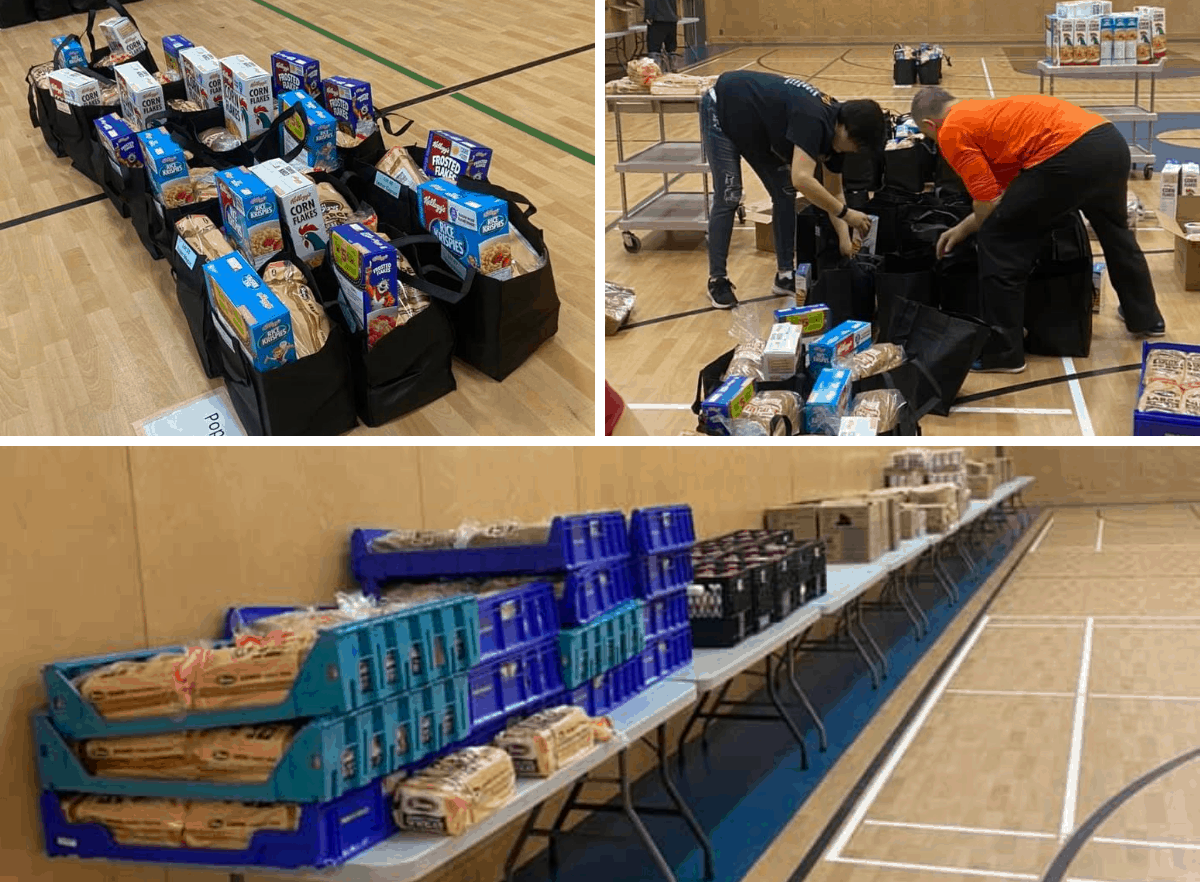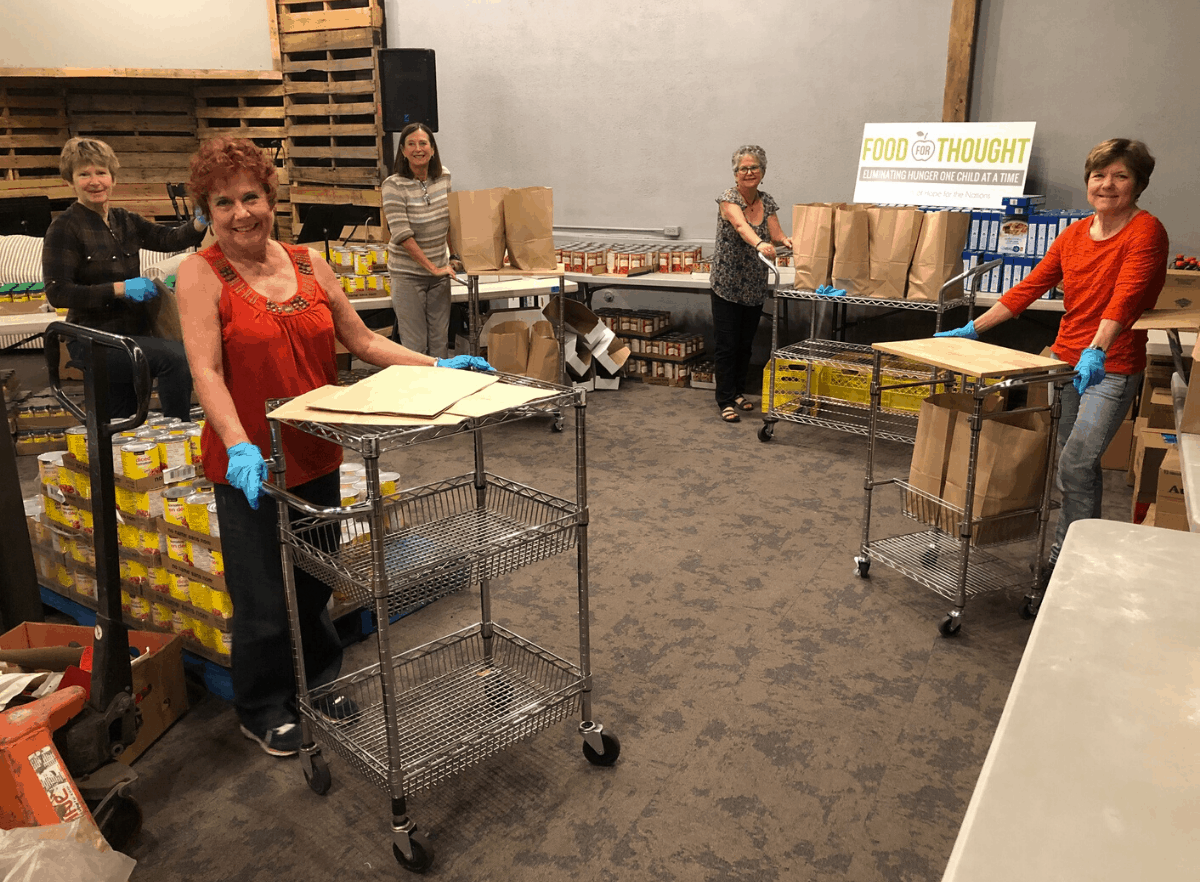
Fall 2021 Open House Idea Compilation

In Back-to-School open house sessions across Canada, participants shared some of the challenges they faced in breakfast programming for this school year. Our team has compiled top ideas and suggestions provided by fellow schools in response to topics like incorporating volunteers, reducing costs and facilitating meal preparation. The open house sessions are very valuable as they provide solutions from and for diverse school communities and contexts.
We are thankful for all who participated in knowledge sharing and hope we’ve adequately captured your tips, as follows:
Incorporating volunteers
- Leveraging community groups as volunteers: Various schools have explored engaging community groups such as the local RCMP, faith groups, businesses or sports teams to help with different aspects of breakfast program planning, including purchasing, delivery, meal prepping and packaging. Consider this if your school regulations allow for external volunteers.
- Working with nearby high schools: Is there a high school close to you? One school provided a unique suggestion to partner with a high school. The older students prepare and package meals and then walk them over in the morning and drop them off at the school entrance. High school students can apply this experience toward volunteer hours or as a special project for a food safety and food education class. This is a good solution for schools that are not allowed to have extra volunteers in their food prep areas.
- Using student volunteers in a community service program: Some of our schools that are allowed to work with student volunteers have chosen to include breakfast programming prep work as a part of students’ community service hours. This helps students give back to their community, hone leadership skills and ease the stress on program coordinators. For an example of this idea in action, check out our newsletter article for a story about student volunteers at Georges P. Vanier School.
- Engaging staff members: Consider holding a staff meeting to gauge whether your staff are willing and have the time to help. With restrictions in place in many schools, dedicated staff members have stepped in to run the breakfast program instead of volunteers. One school started an “above and beyond” club with opportunities for staff to pitch in in extra areas of need, including breakfast program prep and delivery. Other schools have assigned breakfast club responsibilities to staff on a weekly rotating basis. A pair of staff members can take care of prep, delivery and clean-up one week and then hand over the reins to a different pair the next. Having more staff members involved can help spread the work around.
- Tip: To help keep staff motivated and feel appreciated, consider hosting a special thank-you breakfast on a non-instructional day or incorporating breakfast program responsibilities into their workable hours.
Reduced prep work
For those of you who are prevented from having extra help due to COVID restrictions, an alternative is to focus on reducing the amount of work required to prepare, serve and clean up after breakfast:
- Some schools that used to bake muffins now make smaller “muffin bars.” You can make more bars with fewer ingredients, and the tray is a lot easier to wash than a muffin tin. Spread your favourite muffin batter on a baking tray that is well greased or lined with parchment paper or a silicone sheet. Baking times may vary, depending on the thickness of the batter. You’ll find lots of recipes for muffin bars online.
- Similarly, some schools make oven-baked oatmeal pancakes on a baking sheet and slice them into single servings. They are easy to pour, flip and serve, and they save a lot of time.
- It was suggested that students bring in their own containers, cutlery and bottles and wash them at home to reduce clean-up time for schools. This also cuts down on disposable waste and can save money for schools who had been using paper plates and plastic cutlery.
- Some schools recommended having students wash their own dishes in the classroom before returning them to the kitchen. This can save on time and effort, especially for schools with limited dishwashing capacity.
Cost savings
- Financial support programs may be able to help seek out an independent or wholesale grocer in your community for produce like berries and vegetables. Independent grocers are sometimes able to offer lower prices on locally grown foods. A school in Cochrane, Alberta, found this to be very cost-effective for their breakfast program, which serves hundreds of students.
- Buying large items like blocks of cheese and dividing them into smaller servings is often more budget-friendly than buying individual portions like cheese strings.
- Enquire about available discounts for school breakfast programs at grocery stores.
- Stretch every dollar you spend and reduce food waste by sending leftover food home with students or offering them an end-of-day snack as the exit the building.
We recognize that there is no one-size-fits-all approach to cover such a diverse range of schools across the country, but we do hope that you can use one or two of these suggestions to make your breakfast program easier to run this year. Once again, we send out a huge thanks to everyone who participated in our back-to-school open house sessions and shared their innovative solutions with their peers. Your engagement, insight and support are greatly appreciated. We hope to hear more of your tried-and-true hacks and solutions at other sessions later in the year!








